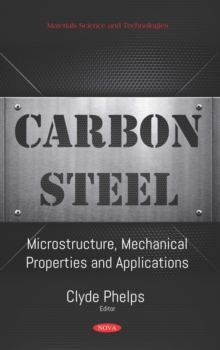
Dielectric Materials: Introduction, Research and Applications PDF
by Ram Naresh Prasad Choudhary
Part of the Materials Science and Technologies series
Description
In reviewing the growth, development and properties of dielectrics, it is worth discussing the issues of creating new materials and understanding the origin of the properties shown with external stimuli.
Beginning with a brief summary of the history of the dielectric materials, this review focuses on the chronological development and recent works with possible future applications.
At present, the broad class of dielectrics becomes interesting from the point of view of its diverse applications in various fields.
Solid dielectrics are perhaps the most commonly used dielectrics in electrical engineering, and many solids are very good insulators.
As we know, solids may be classified according to various criteria: (i) structure (as crystalline and non-crystalline solids); (ii) electrical conductivity (conductors, semiconductors and insulators); (iii) the existence of some basic properties.
Dielectric materials can be divided into 32 crystal classes or point groups.
Information
-
Download - Immediately Available
- Format:PDF
- Pages:162 pages
- Publisher:Nova Science Publishers, Inc.
- Publication Date:07/08/2009
- Category:
- ISBN:9781617283673
Other Formats
- Hardback from £98.79
Information
-
Download - Immediately Available
- Format:PDF
- Pages:162 pages
- Publisher:Nova Science Publishers, Inc.
- Publication Date:07/08/2009
- Category:
- ISBN:9781617283673










